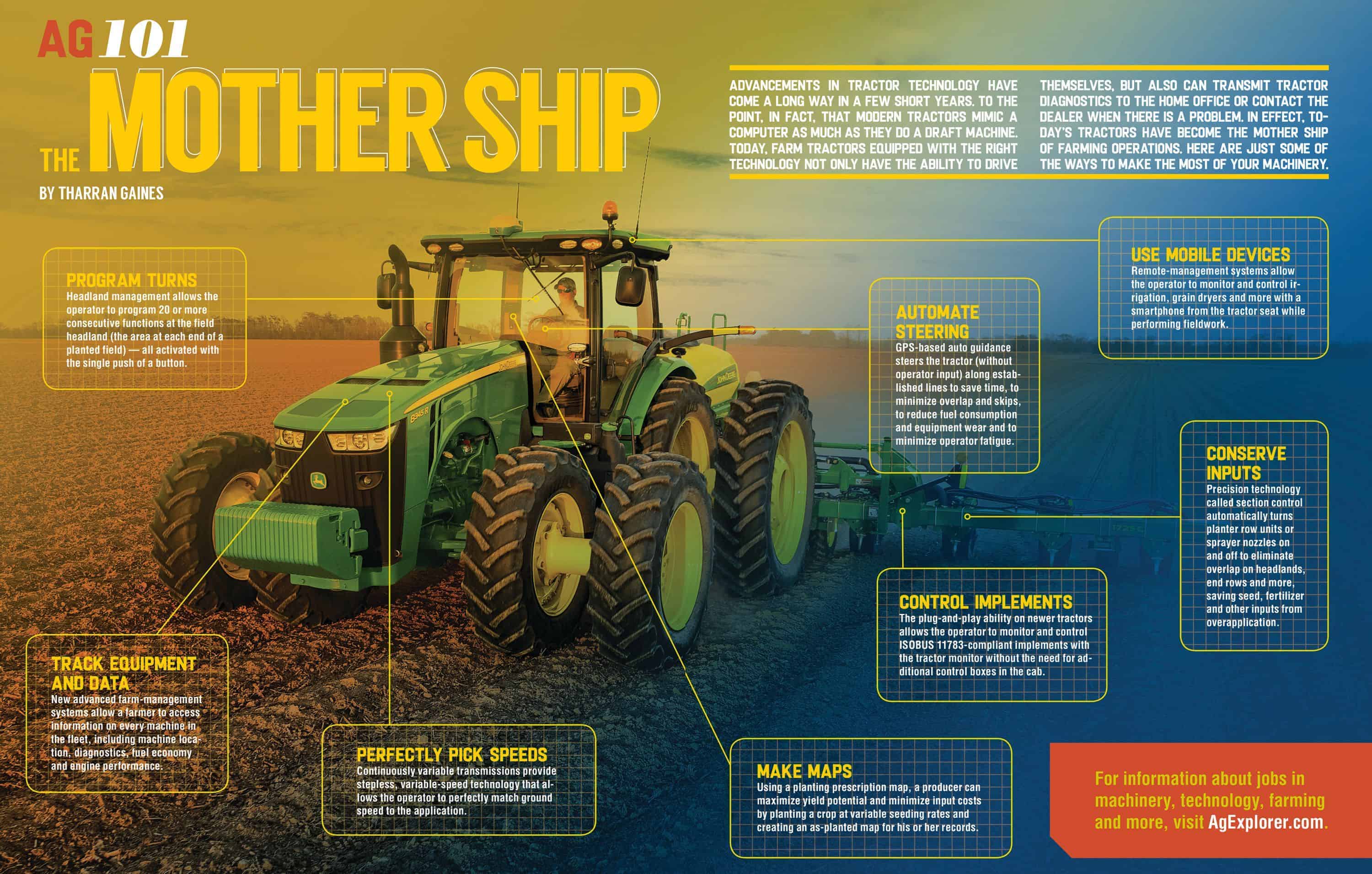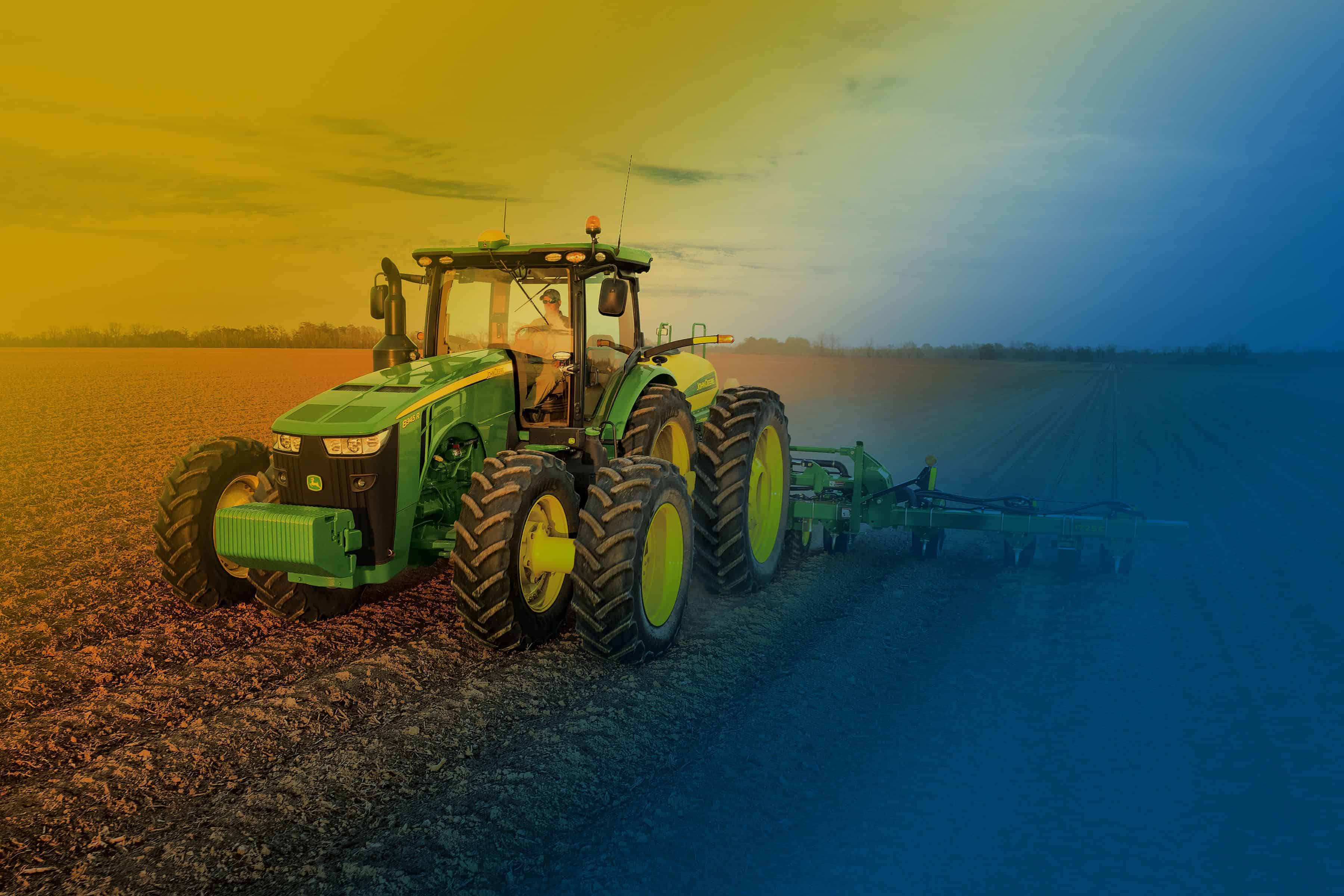
Advancements in tractor technology have come a long way in a few short years. To the point, in fact, that modern tractors mimic a computer as much as they do a draft machine. Today, farm tractors equipped with the right technology not only have the ability to drive themselves, but also can transmit tractor diagnostics to the home office or contact the dealer when there is a problem. In effect, today’s tractors have become the mother ship of farming operations. Here are just some of the ways to make the most of your machinery.
Program Turns
Headland management allows the operator to program 20 or more consecutive functions at the field headland (the area at each end of a planted field) — all activated with the single push of a button.
Track Equipment and Data
New advanced farm-management systems allow a farmer to access information on every machine in the fleet, including machine location, diagnostics, fuel economy and engine performance.
Perfectly Pick Speeds
Continuously variable transmissions provide stepless, variable-speed technology that allows the operator to perfectly match ground speed to the application.
Use Mobile Devices
Remote-management systems allow the operator to monitor and control irrigation, grain dryers and more with a smartphone from the tractor seat while performing fieldwork.
Automate Steering
GPS-based auto-guidance steers the tractor (without operator input) along established lines to save time, to minimize overlap and skips, to reduce fuel consumption and equipment wear and to minimize operator fatigue.
Control Implements
The plug-and-play ability on newer tractors allows the operator to monitor and control ISOBUS 11783-compliant implements with the tractor monitor without the need for additional control boxes in the cab.
Conserve Inputs
Precision technology called section control automatically turns planter row units or sprayer nozzles on and off to eliminate overlap on headlands, end rows and more, saving seed, fertilizer and other inputs from overapplication.
Make Maps
Using a planting prescription map, a producer can maximize yield potential and minimize input costs by planting a crop at variable seeding rates and creating an as-planted map for his or her records.
For information about jobs in machinery, technology, farming and more, visit AgExplorer.com.












